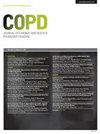受监督的家庭远程康复与中心肺康复的比较:宁夏多中心随机非劣效性研究方案
IF 3.1
3区 医学
Q1 Medicine
International Journal of Chronic Obstructive Pulmonary Disease
Pub Date : 2024-07-25
DOI:10.2147/copd.s467945
引用次数: 0
摘要
背景:肺康复(PR)是针对慢性阻塞性肺病(COPD)患者的有效干预措施。然而,只有不到 5%的符合条件者接受了肺康复治疗,这主要是由于康复治疗的可及性有限以及旅行和交通方面的困难。有监督的家庭远程康复(SHTR)是中心肺康复的一种替代模式。我们将确定有监督的家庭远程康复是否不逊于中心肺康复:方法:参与者将接受为期 8 周的康复计划。肺康复包括四个主要模块:运动训练、教育、营养支持以及心理和行为干预。我们主要关注运动训练和教育模块。教育模块包括运动训练、营养和心理等方面的信息,这些信息将通过提供给每位参与者的教育手册进行介绍。双盲评估员将对基线、干预后和干预后 6 个月的结果进行评估。主要结果是 6 分钟步行距离的变化。次要结果将评估患者 1 分钟坐立测试、最大吸气压力(MIP)、量表(CAT、mMRC、HAD)、膈肌超声波(TD、DE、DIF)的变化、胸廓外肌肉体积和质量的变化、患者运动处方的完成率、不良事件的发生率,以及康复后和 6 个月随访期间的疾病加重率和再住院率:讨论:为了提高肺康复的可及性和患者的相关结果,有必要提出另一种肺康复模式。本试验将确定有监督的家庭远程康复是否不逊于传统的中心肺康复:中国临床试验注册中心 ChiCTR2300076969。注册日期:2023年10月25日。本文章由计算机程序翻译,如有差异,请以英文原文为准。
Comparison of a Supervised Home-Based Tele-Rehabilitation with Center-Based Pulmonary Rehabilitation: Protocol for a Randomized Non-Inferiority Multicenter Study in Ningxia
Background: Pulmonary rehabilitation (PR) is an effective intervention for people with chronic obstructive pulmonary disease (COPD). However, fewer than 5% of eligible individuals receive pulmonary rehabilitation, largely due to limited by the accessibility of rehabilitation and difficulties associated with travel and transport. Supervised home-based tele-rehabilitation (SHTR) is an alternative model to center-based pulmonary rehabilitation. We will determine whether supervised home-based tele-rehabilitation is non-inferior to center-based pulmonary rehabilitation.
Methods: The participants will undergo an 8-week rehabilitation program. Pulmonary rehabilitation comprises four main modules: exercise training, education, nutritional support, and psychological and behavioral interventions. We mainly focus on the module of exercise training and education. The education module includes information on exercise training, nutrition, and psychology, which are presented in an educational booklet provided to each participant. Blinded assessors will evaluate the outcomes at baseline, post-intervention, and 6 months after the intervention. The primary outcome is the change in the 6-minute walking distance. Secondary outcomes will assess changes in the patients’ 1-minute sit-to-stand test, maximal inspiratory pressure (MIP), scales (CAT, mMRC, HAD), diaphragm ultrasound (TD, DE, DIF), changes in extrathoracic muscle volume and mass, completion rate of patient exercise prescriptions, occurrence of adverse events, as well as disease exacerbation and rehospitalization rates after rehabilitation and during the 6-month follow-up.
Discussion: In order to improve the accessibility of pulmonary rehabilitation and patient-related outcomes, it is necessary to propose an alternative model of pulmonary rehabilitation. This trial will establish whether a supervised home-based tele-rehabilitation is not inferior to traditional center-based pulmonary rehabilitation.
Trial Registration: Chinese Clinical Trial Registry ChiCTR2300076969. Registered on October 25, 2023.
Methods: The participants will undergo an 8-week rehabilitation program. Pulmonary rehabilitation comprises four main modules: exercise training, education, nutritional support, and psychological and behavioral interventions. We mainly focus on the module of exercise training and education. The education module includes information on exercise training, nutrition, and psychology, which are presented in an educational booklet provided to each participant. Blinded assessors will evaluate the outcomes at baseline, post-intervention, and 6 months after the intervention. The primary outcome is the change in the 6-minute walking distance. Secondary outcomes will assess changes in the patients’ 1-minute sit-to-stand test, maximal inspiratory pressure (MIP), scales (CAT, mMRC, HAD), diaphragm ultrasound (TD, DE, DIF), changes in extrathoracic muscle volume and mass, completion rate of patient exercise prescriptions, occurrence of adverse events, as well as disease exacerbation and rehospitalization rates after rehabilitation and during the 6-month follow-up.
Discussion: In order to improve the accessibility of pulmonary rehabilitation and patient-related outcomes, it is necessary to propose an alternative model of pulmonary rehabilitation. This trial will establish whether a supervised home-based tele-rehabilitation is not inferior to traditional center-based pulmonary rehabilitation.
Trial Registration: Chinese Clinical Trial Registry ChiCTR2300076969. Registered on October 25, 2023.
求助全文
通过发布文献求助,成功后即可免费获取论文全文。
去求助
来源期刊

International Journal of Chronic Obstructive Pulmonary Disease
RESPIRATORY SYSTEM-
CiteScore
5.10
自引率
10.70%
发文量
372
审稿时长
16 weeks
期刊介绍:
An international, peer-reviewed journal of therapeutics and pharmacology focusing on concise rapid reporting of clinical studies and reviews in COPD. Special focus will be given to the pathophysiological processes underlying the disease, intervention programs, patient focused education, and self management protocols. This journal is directed at specialists and healthcare professionals
 求助内容:
求助内容: 应助结果提醒方式:
应助结果提醒方式:


